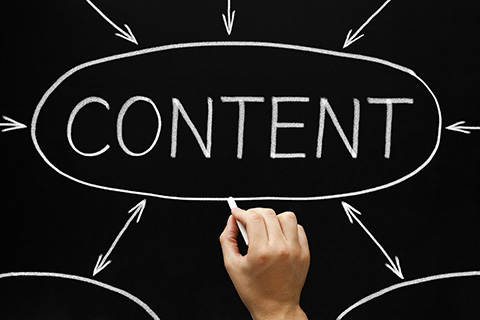No Marketing Phase is an Island

April 07, 2014
When initiating a content marketing plan, there is one common mistake many companies make: they fail to see how each stage of the marketing plan affects the other. A Forrester report ("Put Distribution at the Heart of Content Marketing", October 2013) references the four phases of content marketing - planning, creation, promotion and measurement, explaining how one must look at distribution throughout all four stages (it is often only looked at in the promotion stage, as that is when the actual distribution channel is used).
Limiting the focus on distribution to just this singular stage of the content marketing process is certainly problematic - and the same can be said for other elements as well. When planning your content, it's a good idea to consider the tone of your writing, as this will impact the way in which the content is written (the creation stage) and marketed (the promotion stage). This is just one example of how a marketing rollout should always be looked at as a whole, even if different departments, employees or services are in charge of the various phases.
For the sake of this article, let's focus on distribution of press releases as a critical component to any content marketing process, and how distribution needs to be considered in each step of the content marketing life cycle.
When planning your press release, consider how you will distribute it - which channels will you use? An online service, a public relations company, your own media contacts and media lists, or a combination? Contemplating which channels to use at this stage may seem premature, but it will help you get a clearer idea of the audience you can reach, which helps you to know what style, subject and tone of release to produce.
If your company is consistent across the board with how it creates its content, then it is still useful to look at distribution in the reverse manner, too: in the planning stage, knowing what your tone is and what the release's subject matter will be, what channels can you use to ensure that this release is going to reach an audience that will be most receptive to this style of content?
Giving this adequate consideration during the planning phase ensures fewer re-drafts of the content during the creation phase, and a more efficient and effective promotion phase, also.
Once you are into the creation phase, consider the method of distribution you will use so you know how to format and structure your press release. Will you be primarily distribution the release online? Keep in mind the short attention spans of online readers and incorporate multimedia, such as videos, images, infographics or charts, as these are easily viewed on an electronic device and help provide variety to the human eye, which is easily tired by rows and rows of text on a backlit screen. Perhaps you will want to create a short video or infographic to accompany this release, to help it perform better in electronic distribution channels. If you are sending this out via email as an attachment, keep in mind that it's often beneficial to have your content fit entirely on one page, so allow for this in your word count and remember that if you wish to embed images you will need to allow space for that, also.
Of course, the promotion phase is all about distribution - while you may use other methods of promoting your press release (posting it to your own blog and social media channels, for example), using a distribution service is usually the central part of the promotion phase for any content marketing plan, whether you use an online service or simply your own contacts. Will you use more than one channel? Will you be trying out a new service and, if so, do you understand how its distribution method works?
Lastly, the measurement phase allows you to compile metrics that analyze your press release's performance. Use the metrics system provided by the distribution service you used, along with tools of your own - perhaps Google alerts, or a clipping service that will track your release and any references made to it in traditional and social media. Compiling this information in a report that can be reviewed before your next marketing rollout will offer valuable insight and allow you to repeat successes and avoid methods that didn't work so well in the past.
The key to remember is: no marketing phase is an island. All phases in the marketing process rely on the ones that came before and the ones that will come after, and keeping this consistency in mind will ensure a more efficient and successful marketing rollout.
